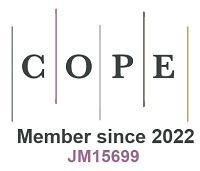REFERENCES
1. An L, Zhao T, Li Y. Carbon-neutral sustainable energy technology: direct ethanol fuel cells. Renew Sust Energ Rev 2015;50:1462-8.
2. Rostamikia G, Janik MJ. Direct borohydride oxidation: mechanism determination and design of alloy catalysts guided by density functional theory. Energy Environ Sci 2010;3:1262.
3. Ji X, Lee KT, Holden R, et al. Nanocrystalline intermetallics on mesoporous carbon for direct formic acid fuel cell anodes. Nat Chem 2010;2:286-93.
4. Serov A, Padilla M, Roy AJ, et al. Anode catalysts for direct hydrazine fuel cells: from laboratory test to an electric vehicle. Angew Chem 2014;126:10504-7.
5. Varcoe JR, Atanassov P, Dekel DR, et al. Anion-exchange membranes in electrochemical energy systems. Energy Environ Sci 2014;7:3135-91.
6. Wang T, Wang Q, Wang Y, et al. Atomically dispersed semimetallic selenium on porous carbon membrane as an electrode for hydrazine fuel cells. Angew Chem 2019;131:13600-5.
7. Xue Q, Huang H, Zhu J, et al. Au@Rh core-shell nanowires for hydrazine electrooxidation. Appl Catal B Environ 2020;278:119269.
8. Liu F, Jiang X, Wang H, et al. Boosting electrocatalytic hydrazine oxidation reaction on high-index faceted Au concave trioctahedral nanocrystals. ACS Sustain Chem Eng 2022;10:696-702.
9. Rees NV, Compton RG. Carbon-free energy: a review of ammonia- and hydrazine-based electrochemical fuel cells. Energy Environ Sci 2011;4:1255.
10. Li F, Ji Y, Wang S, Li S, Chen Y. Ethylenediaminetetraacetic acid mediated synthesis of palladium nanowire networks and their enhanced electrocatalytic performance for the hydrazine oxidation reaction. Electrochim Acta 2015;176:125-9.
11. Ensafi AA, Abarghoui MM, Rezaei B. Facile synthesis of Pt-Cu@silicon nanostructure as a new electrocatalyst supported matrix, electrochemical detection of hydrazine and hydrogen peroxide. Electrochim Acta 2016;190:199-207.
12. Liu Y, Chen S, Wang A, Feng J, Wu X, Weng X. An ultra-sensitive electrochemical sensor for hydrazine based on AuPd nanorod alloy nanochains. Electrochim Acta 2016;195:68-76.
13. Chen L, Jiang L, Wang A, Chen Q, Feng J. Simple synthesis of bimetallic AuPd dendritic alloyed nanocrystals with enhanced electrocatalytic performance for hydrazine oxidation reaction. Electrochim Acta 2016;190:872-8.
14. Sakamoto T, Matsumura D, Asazawa K, et al. Operando XAFS study of carbon supported Ni, NiZn, and Co catalysts for hydrazine electrooxidation for use in anion exchange membrane fuel cells. Electrochim Acta 2015;163:116-22.
15. Zhang C, Yuan W, Wang Q, Peng X, Liu X, Luo J. Single Cu atoms as catalysts for efficient hydrazine oxidation reaction. ChemNanoMat 2020;6:1474-8.
16. Feng Z, Li D, Wang L, et al. In situ grown nanosheet Ni Zn alloy on Ni foam for high performance hydrazine electrooxidation. Electrochim Acta 2019;304:275-81.
17. Tang P, Lin X, Yin H, et al. Hierarchically nanostructured nickel-cobalt alloy supported on nickel foam as a highly efficient electrocatalyst for hydrazine oxidation. ACS Sustain Chem Eng 2020;8:16583-90.
18. Zhang T, Asefa T. Heteroatom-doped carbon materials for hydrazine oxidation. Adv Mater 2019;31:e1804394.
19. Sápi A, Rajkumar T, Kiss J, Kukovecz Á, Kónya Z, Somorjai GA. Metallic nanoparticles in heterogeneous catalysis. Catal Lett 2021;151:2153-75.
20. Theerthagiri J, Karuppasamy K, Lee SJ, et al. Fundamentals and comprehensive insights on pulsed laser synthesis of advanced materials for diverse photo- and electrocatalytic applications. Light Sci Appl 2022;11:250.
21. Yu Y, Theerthagiri J, Lee SJ, Muthusamy G, Ashokkumar M, Choi MY. Integrated technique of pulsed laser irradiation and sonochemical processes for the production of highly surface-active NiPd spheres. Chem Eng J 2021;411:128486.
22. Theerthagiri J, Lee SJ, Murthy AP, Madhavan J, Choi MY. Fundamental aspects and recent advances in transition metal nitrides as electrocatalysts for hydrogen evolution reaction: a review. Curr Opin Solid State Mater Sci 2020;24:100805.
23. Xiao C, Lu B, Xue P, et al. High-index-facet- and high-surface-energy nanocrystals of metals and metal oxides as highly efficient catalysts. Joule 2020;4:2562-98.
24. Koper MT. Structure sensitivity and nanoscale effects in electrocatalysis. Nanoscale 2011;3:2054-73.
25. Bentley CL, Kang M, Unwin PR. Nanoscale surface structure-activity in electrochemistry and electrocatalysis. J Am Chem Soc 2019;141:2179-93.
26. Yu N, Tian N, Zhou Z, et al. Pd nanocrystals with continuously tunable high-index facets as a model nanocatalyst. ACS Catal 2019;9:3144-52.
27. Rosca V, Koper MT. Electrocatalytic oxidation of hydrazine on platinum electrodes in alkaline solutions. Electrochim Acta 2008;53:5199-205.
28. Kim C, Dionigi F, Beermann V, Wang X, Möller T, Strasser P. Alloy nanocatalysts for the electrochemical oxygen reduction (ORR) and the direct electrochemical carbon dioxide reduction reaction (CO2 RR). Adv Mater 2019;31:e1805617.
29. Zhong H, Liu K, Zhang Q, Meng F, Bao D, Zhang X. Copper tetrazolate based metal-organic frameworks as highly efficient catalysts for artificially chemical and electrochemical CO2 conversion. Nano Select 2020;1:311-9.
30. Wang F, Mao L, Xie H, Mao J. Graphene derivatives and graphene composite electrocatalysts for N2 reduction reaction. Small Struct 2021;2:2000075.
31. Zhou Z, Shang S, Tian N, et al. Shape transformation from Pt nanocubes to tetrahexahedra with size near 10 nm. Electrochem Commun 2012;22:61-4.
32. Tian N, Zhou ZY, Sun SG, Ding Y, Wang ZL. Synthesis of tetrahexahedral platinum nanocrystals with high-index facets and high electro-oxidation activity. Science 2007;316:732-5.
33. Zhou ZY, Tian N, Li JT, Broadwell I, Sun SG. Nanomaterials of high surface energy with exceptional properties in catalysis and energy storage. Chem Soc Rev 2011;40:4167-85.
34. Álvarez-ruiz B, Gómez R, Orts JM, Feliu JM. Role of the metal and surface structure in the electro-oxidation of hydrazine in acidic media. J Electrochem Soc 2002;149:D35.
35. Xiao J, Liu S, Tian N, et al. Synthesis of convex hexoctahedral Pt micro/nanocrystals with high-index facets and electrochemistry-mediated shape evolution. J Am Chem Soc 2013;135:18754-7.
36. Xiao C, Tian N, Li W, et al. Shape transformations of Pt nanocrystals enclosed with high-index facets and low-index facets. CrystEngComm 2021;23:6655-60.
37. Chen Q, Vidal-iglesias FJ, Solla-gullón J, Sun S, Feliu JM. Role of surface defect sites: from Pt model surfaces to shape-controlled nanoparticles. Chem Sci 2012;3:136-47.
38. Zhong C, Hu WB, Cheng YF. Recent advances in electrocatalysts for electro-oxidation of ammonia. J Mater Chem A 2013;1:3216-38.
39. Chang F, Gao W, Guo J, Chen P. Emerging materials and methods toward ammonia-based energy storage and conversion. Adv Mater 2021;33:e2005721.
40. Li J, Zhang C, Zhang C, et al. Electronic configuration of single ruthenium atom immobilized in urchin-like tungsten trioxide towards hydrazine oxidation-assisted hydrogen evolution under wide pH media. Chem Eng J 2022;430:132953.
41. Chen S, Wang C, Liu S, et al. Boosting hydrazine oxidation reaction on CoP/Co mott-schottky electrocatalyst through engineering active sites. J Phys Chem Lett 2021;12:4849-56.
42. Dhiman N, Pradhan D, Mohanty P. Heteroatom (N and P) enriched nanoporous carbon as an efficient electrocatalyst for hydrazine oxidation reaction. Fuel 2022;314:122722.
43. Yan Y, Zhang JY, Shi XR, et al. A zeolitic-imidazole framework-derived trifunctional electrocatalyst for hydrazine fuel cells. ACS Nano 2021;15:10286-95.
44. Zhu Y, Zhang J, Qian Q, et al. Dual nanoislands on Ni/C hybrid nanosheet activate superior hydrazine oxidation-assisted high-efficiency H2 production. Angew Chem Int Ed Engl 2022;61:e202113082.
45. Li J, Li Y, Wang J, et al. Elucidating the critical role of ruthenium single atom sites in water dissociation and dehydrogenation behaviors for robust hydrazine oxidation-boosted alkaline hydrogen evolution. Adv Funct Mater 2022;32:2109439.
46. Li Y, Zhang J, Liu Y, et al. Partially exposed RuP2 surface in hybrid structure endows its bifunctionality for hydrazine oxidation and hydrogen evolution catalysis. Sci Adv 2020:6.








